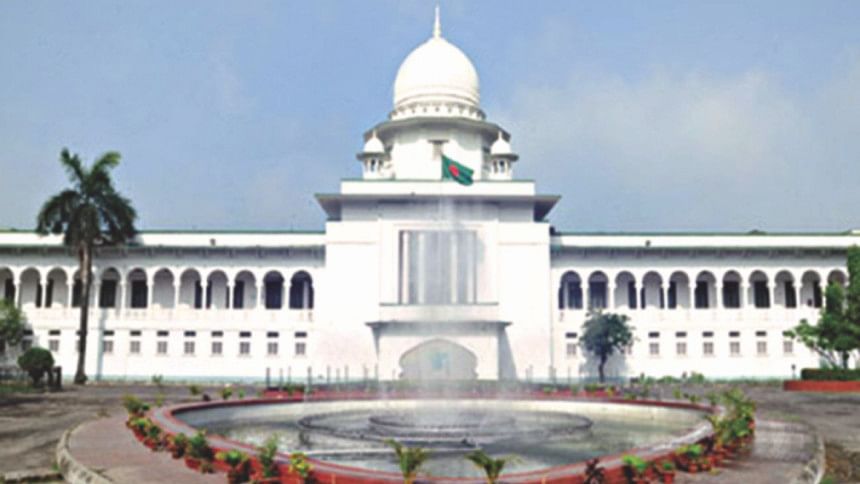Top court faces acute shortage of judges

The number of apex court judges has come down to six from 11 in 2009 after the retirement of Justice Nazmun Ara Sultana, the first-ever female judge of the Supreme Court.
The High Court has also been facing a similar shortage of judges following retirement and death of some judges in the last couple of months.
The number of HC judge now stands at 86, which was 100 in June 2012.
The crisis of judges at the Appellate and HC divisions has caused a huge backlog of pending cases resulting in severe sufferings to the justice seekers.
The six Appellate Division judges are dealing with more than 13,000 cases. On the other side, 86 HC judges are dealing with more than 4.31 lakh cases.
In the lower courts, there are only 1,268 judges who are hearing a huge backlog of more than 27 lakh cases.
Considering the situation, the government plans to promote some HC judges to the Appellate Division and appoint some new judges to the HC.
“Certainly, the government has a plan to promote some High Court Division judges to the Appellate Division. Besides, recruitment of some new judges to the High Court Division is underway,” Law Minister Anisul Huq told The Daily Star yesterday.
He, however, did not specifically say when and how many judges would be appointed to the Appellate and HC divisions.
The president would take the decision to that end after consulting with the prime minister and the chief justice, the law minister added.
Among the Appellate Division judges, Justice Mohammad Bazlur Rahman passed away on January 1, Justice Md Nizamul Huq retired in April and Justice Nazmun Ara Sultana retired yesterday.
Among the 86 HC judges, three have been hearing war crimes cases in the International Crimes Tribunal. Justice JN Deb Choudhury died on December 15 last year, Justice Shamim Hasnain retired in April and three judges are set to retire this year.
“There is one judge for every 10,000 and 67,000 people in the USA and India respectively. But in Bangladesh, we have one judge for more than 1 lakh people,” Law Commission Chairman Justice ABM Khairul Haque had observed earlier.
The last time the Appellate Division saw new judges was on February 8 last year when Justice Mirza Hussain Haider, Justice Md Nizamul Huq and Justice Mohammad Bazlur Rahman were sworn in.
The total number of Appellate Division judges reached 11 on July 9, 2009 when the president brought in four new judges for disposal of some important cases including the assassination of Bangabandhu Sheikh Mujibur Rahman and the Fifth Amendment to the Constitution.
In the HC, services of eight out of nine judges were regularised by President Abdul Hamid in February this year, two years after they had joined as additional judges.
An SC source said Chief Justice Surendra Kumar Sinha in last one year has twice asked the government to appoint at least 10 judges to the HC.
“I advised the government to appoint eight additional judges to the High Court in August 2016 after a long discussion with the law minister,” he told the National Judicial Conference 2016 in the capital's Bangabandhu International Conference Centre on December 24 last year.
“On mutual consent, a recommendation was sent to the government for appointing the judges, but the process has yet to see the light in four months,” he said.
The Supreme Court Bar Association (SCBA) has long been demanding appointment of judges to the vacant posts for quick disposal of the pending cases.
SCBA President Advocate Zainul Abedin told this correspondent yesterday that qualified, skilled and experienced judges had to be appointed to the Appellate and HC divisions by formulating a law to establish justice, rule of law and democracy.
If such judges were not appointed, development of the judiciary would not take place, he observed.

 For all latest news, follow The Daily Star's Google News channel.
For all latest news, follow The Daily Star's Google News channel. 








Comments